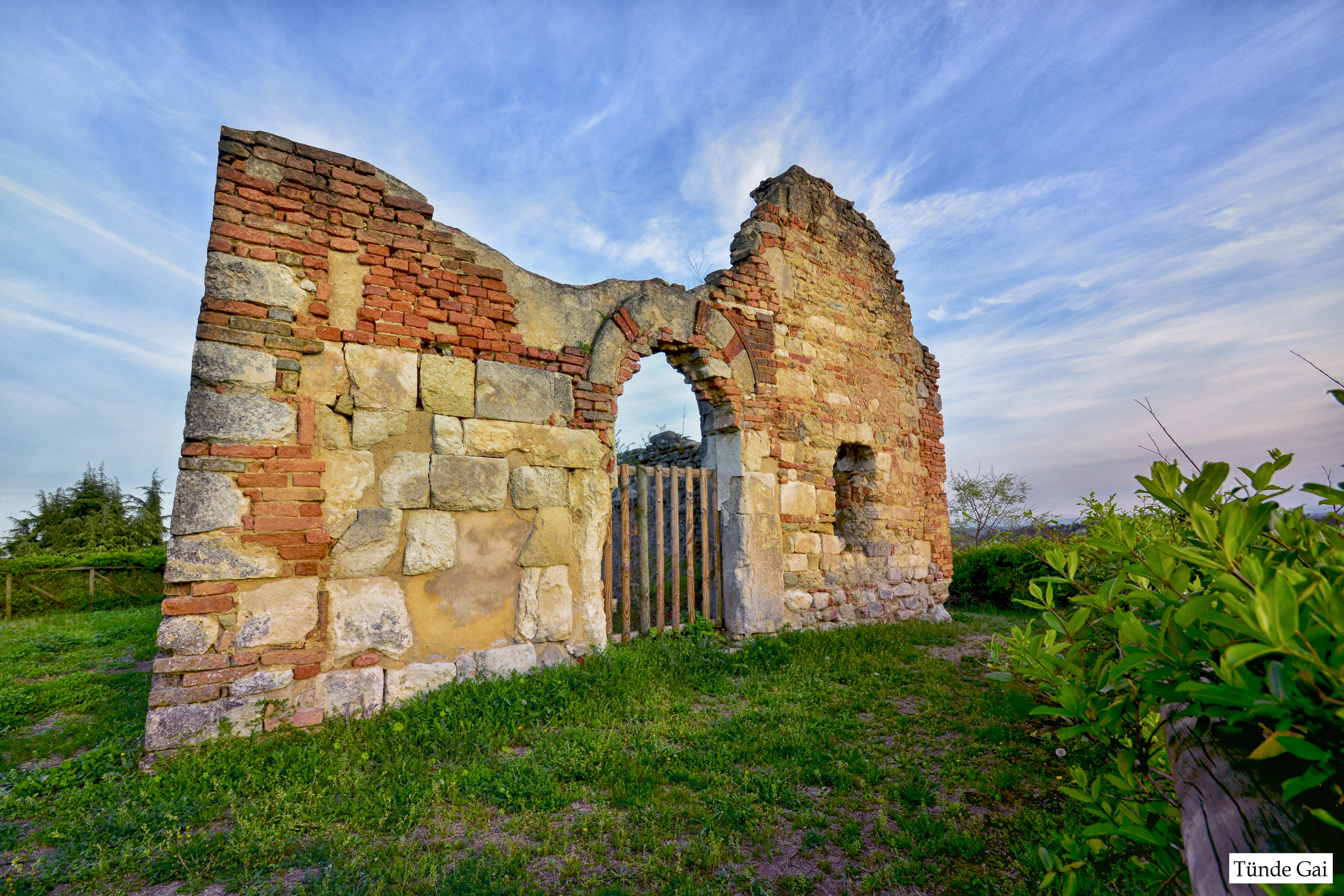
The Romanesque buildings in the Northern part of Asti are many. Basically, almost all villages in the area, from Albugnano to Montafia, from Bagnasco to Castelnuovo, from Buttigliera to Aramengo, Mondonio, Berzano, to name a few of the north western area, have one or more churches or chapels, either Romanesque or Gothic. Even if they are not as important as Santa Maria in Vezzolano, San Secondo in Cortazzone, San Lorenzo in Montiglio or San Nazario in Montechiaro, they are however interesting from the historical and artistic point of view.
The Romanesque Church of Saint Martin in Castelvero, that is now part of the village of Piovà, is one of the oldest in the area. It was probably built on a heathen temple after the early emergence of the Christian cult. Originally the Chapel was subject to the Church of Vercelli, holding the secular power over the lands nearby. The Church bestowed feudatory power to several lords of the area, like the Radicati of Cocconato.
The little church of Castelvero was part of the Pieve of Meirate. Around the year 1000 they were both seized from the Church of Vercelli and assigned to the Diocese of Asti, one of the oldest, largest and richest of the subalpine area. No information regarding the church of Castelvero have been passed through the documents either from the Vercelli episcopal and the local parish archives. The remaining papers from the suppressed municipality of Castelvero kept in the archives in the town hall of Piovà mention the several repairs done at different times not too far from one another. We however know that the officiation of the old church of San Martino ceased in 1810 and in 1835 the nearby cemetery was closed.
The ruins of a very old building, probably dating back to the XI century, is all that is left now. Materials belonging to an earlier building seem to have been used, due to the roman striped bricks found on the surface. It has a rectangular plant 6,75 meters wide by 11,99 meters long, with two semicircular apses with Romanesque semi domes.
The church is almost perfectly orientated. The main rectangular door opens to the west, it is pretty small (1,98 x 1,32 meters), with unadorned stone doorjambs. At the right of the door there is a small, low and rectangular window. Two other similar windows where located at the right side, together with a small door that had been walled up later. It had an earthenware round arch with a sand keystone. In front of the altar few stairs led down to the crypt.
Few traces of colors can be spotted only above the altar. The vest of a saint roughly painted on fresh plaster could be seen before the collapse of the church. It was probably Saint Martin, apostle of Gaul and bishop of Tours. He was born in Pannonia in 317 and died in the year 400. He is chronologically known to be first not tortured saint worshipped by the Church. The early decoration appeared under the thick layer of plaster. It was made with bricks in light colors with a saw-tooth like ornament placed among layers of other large bricks placed lengthwise.
The altar with a small and narrow capital decorated in plaster was placed to the parting wall of the apses. The most interesting items of the old building are the apses and its northern side. The bare ceiling of the left apse shows blocks of sandstone, about 20-25 centimeters thick, that have been shaped on site. They had been laid with very little cement and with inserted layers of bricks.
The vault of the right apse looks less accurate or built with different materials, and it is completely ruined. The outer semicircular walls have no plaster and pilasters. They are made with sandstone blocks in different sizes and thin bricks laid in a herringbone pattern with alternate layers of stones or bricks fragments.
Romanesque Churches like San Pietro in Avigliana, in San Martino in Ciriè, in San Giorgio in Andezeno and many other in Piedmont, have an apse and one or two minor apses placed next to the main. San Martino has instead two apses with same dimensions and same structure and architectural characteristics. Because of that they are very likely to be coeval.
Churches with one or more apses, either semi-circular or polygonal, with various arrangements are widely known. The apses generally are at the head of the nave or of the small naves. Sometimes the small apses are perpendicular to the axis, thus creating the arms of a cross. This may be the early beginning of the Greek cross layout of the dome churches.
Churches with one nave and twin apses next to one another are very rare. For such reason the Romanesque Church of Saint Martin is maybe the only example left in our villages. The twin apses may be ascribed to the Byzantine architecture, taken to our country during the crusade age. The twin apses may reflect the needs of the early Christian cults, like the eastern orientation of the altar. Likewise, through the splayed windows of the apses the rising sun would illuminate the altar during the consecration of the Eucharist.
